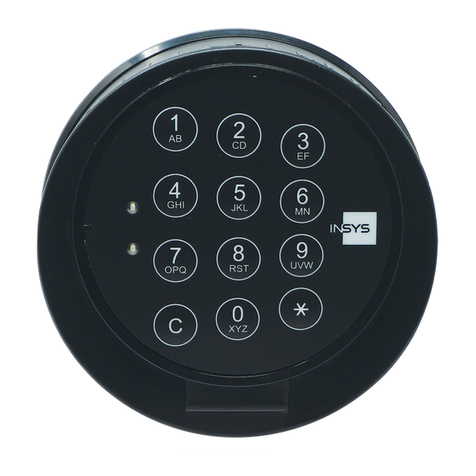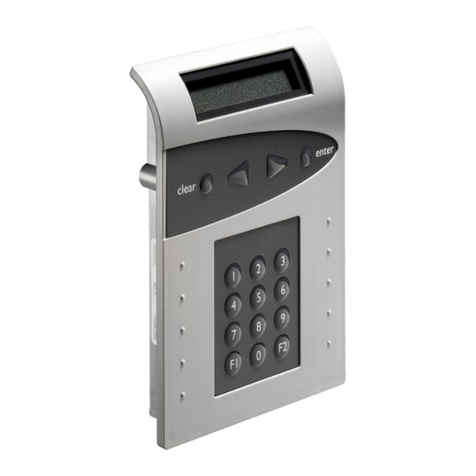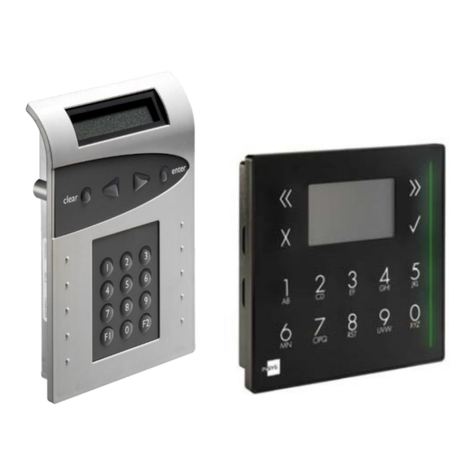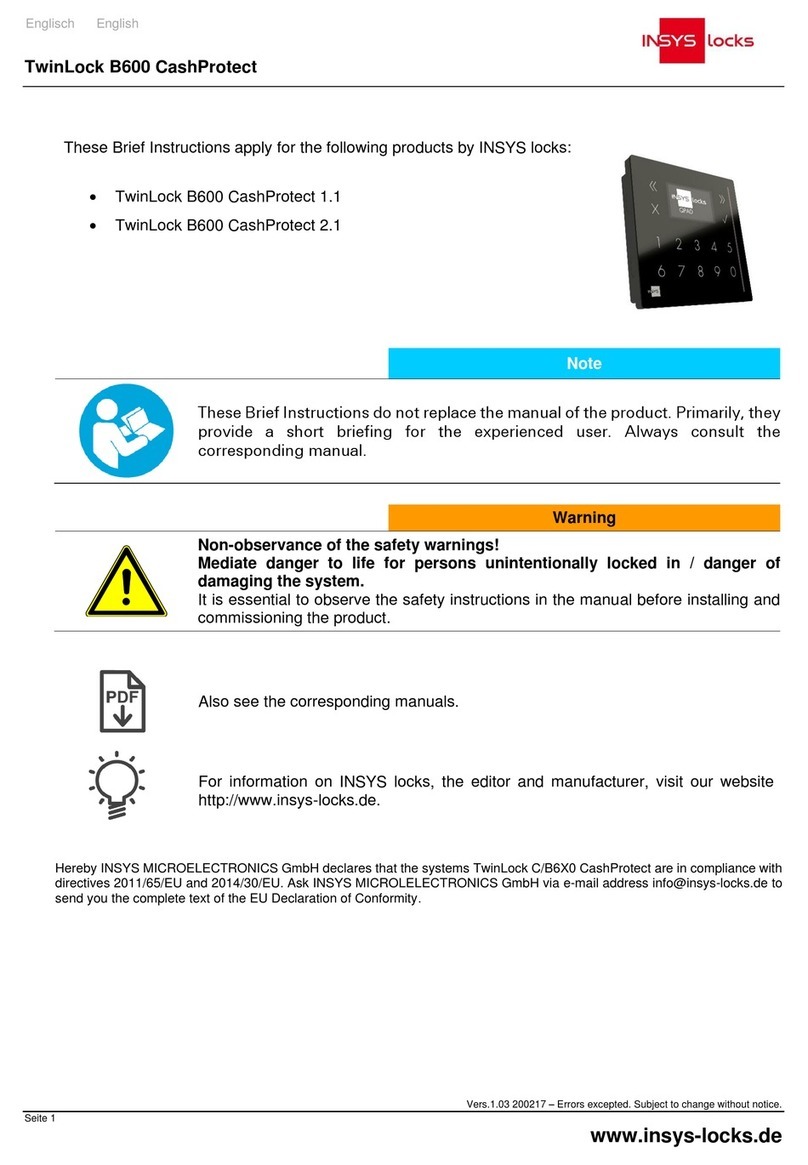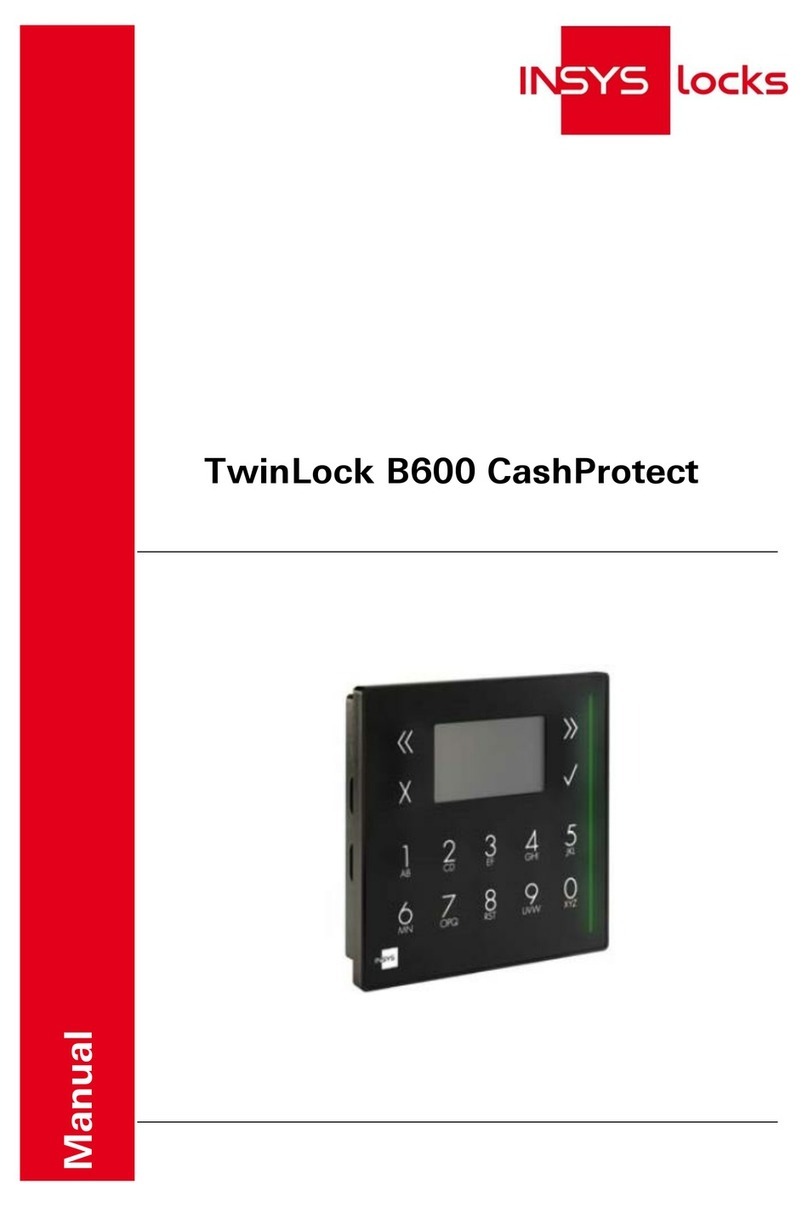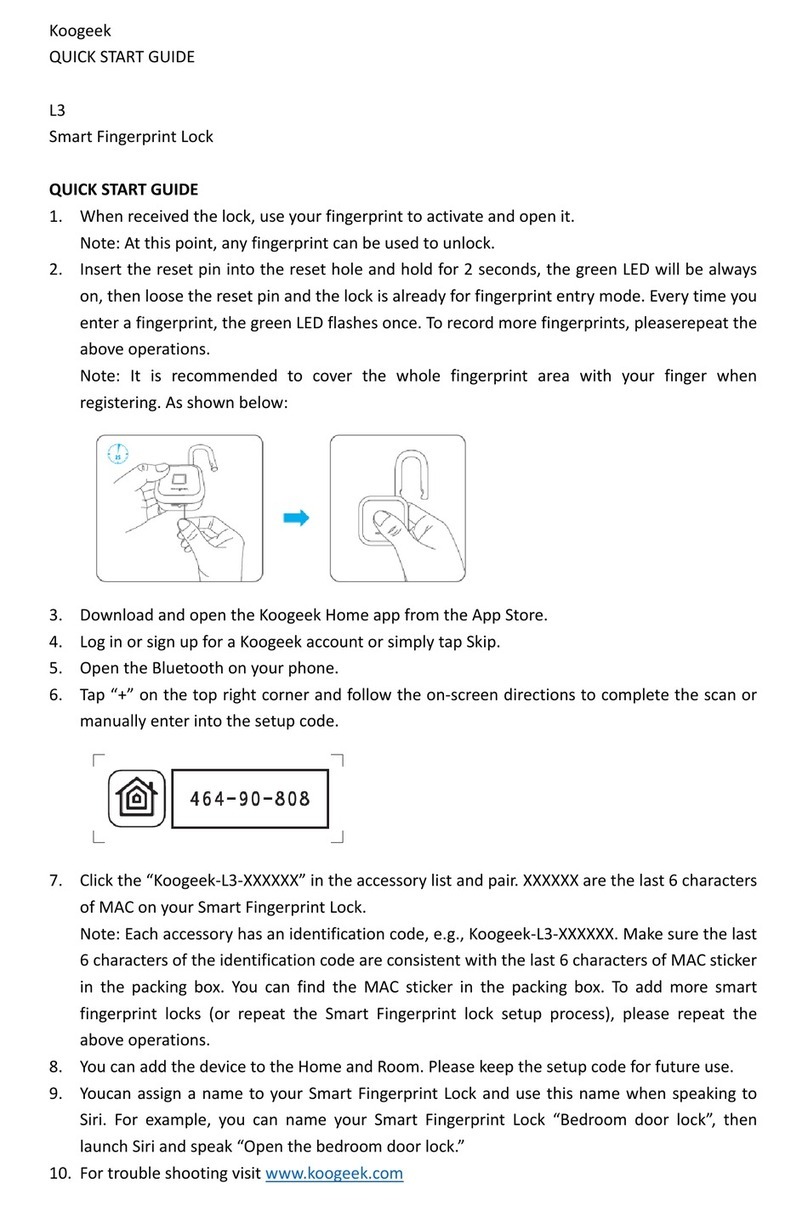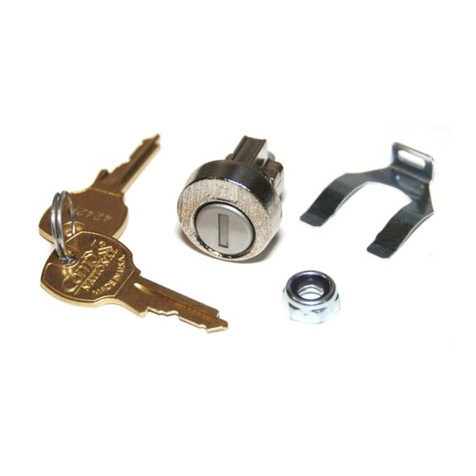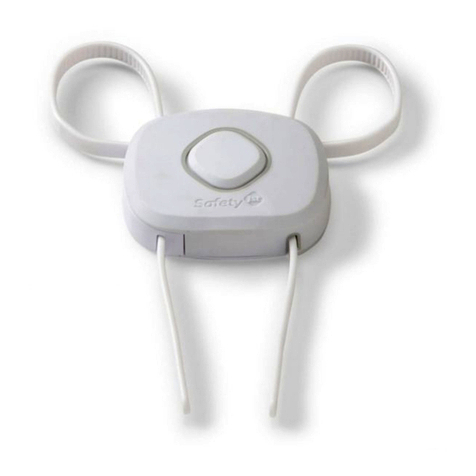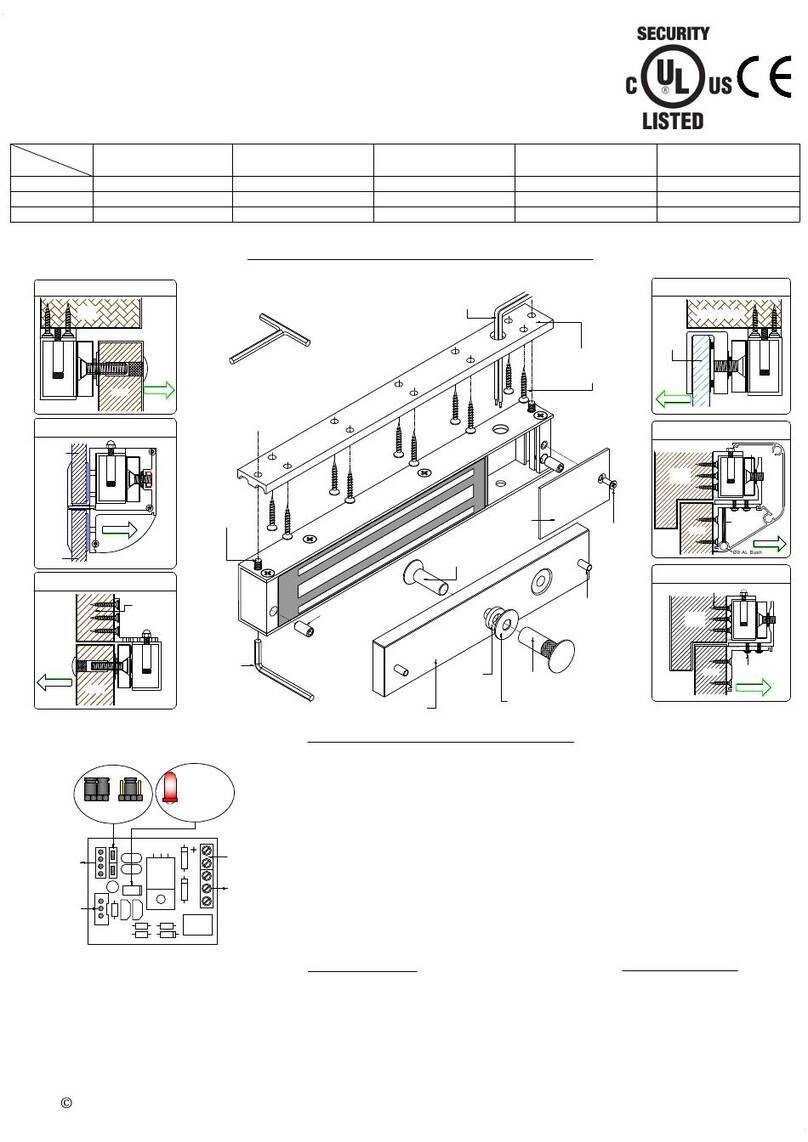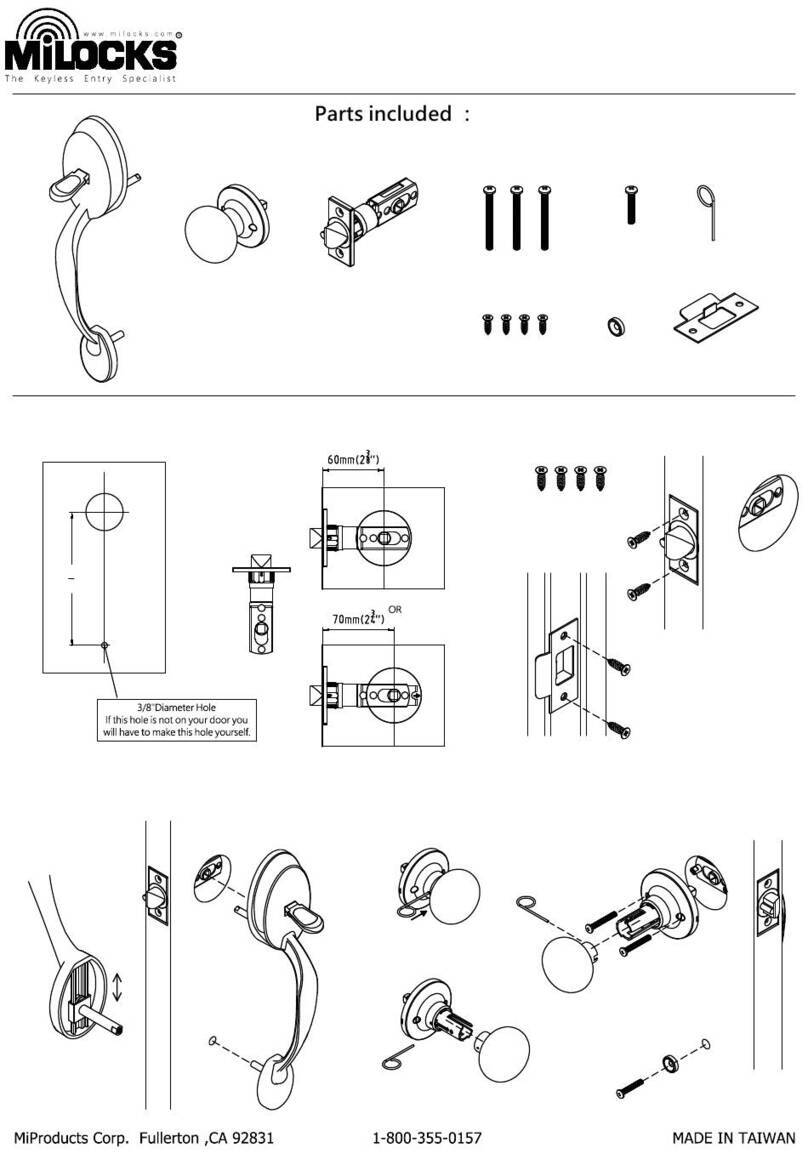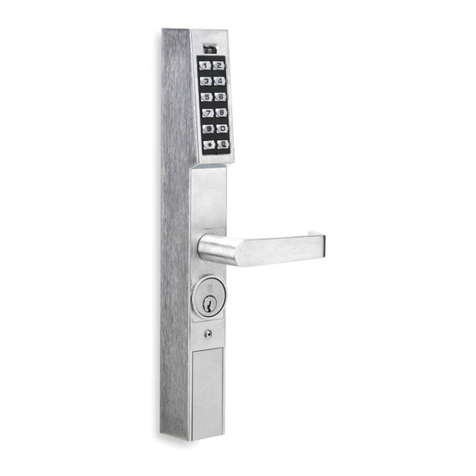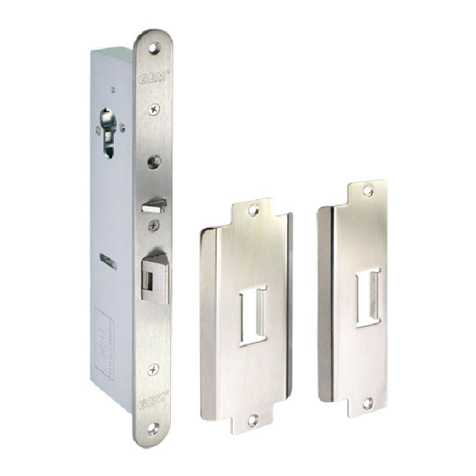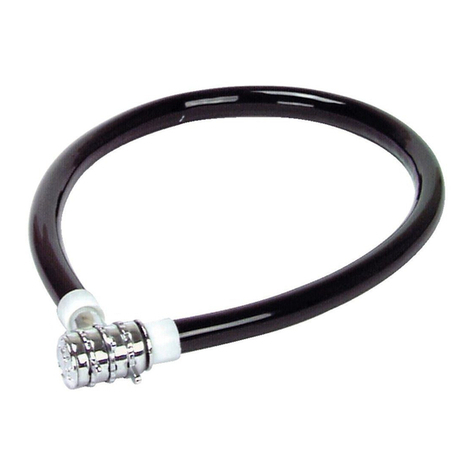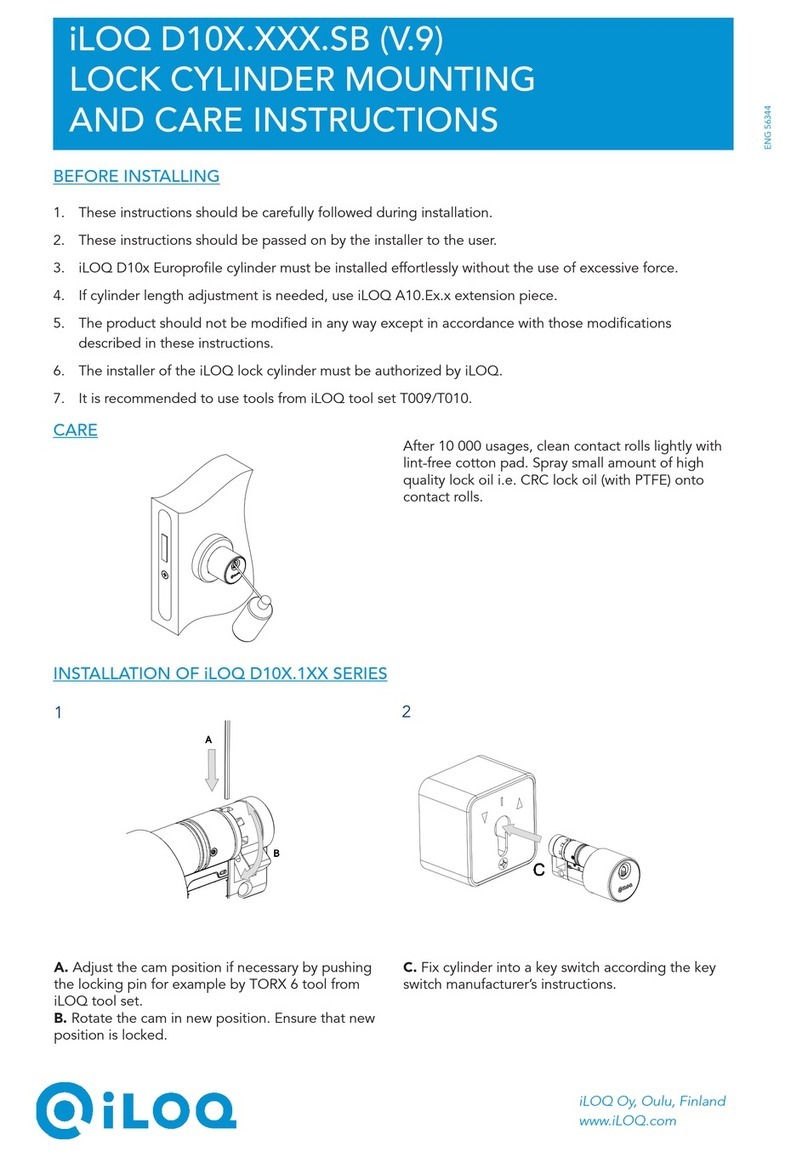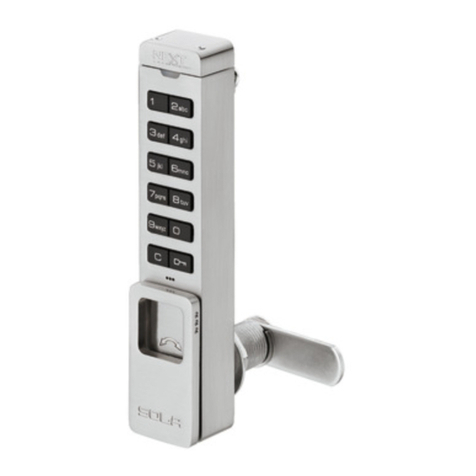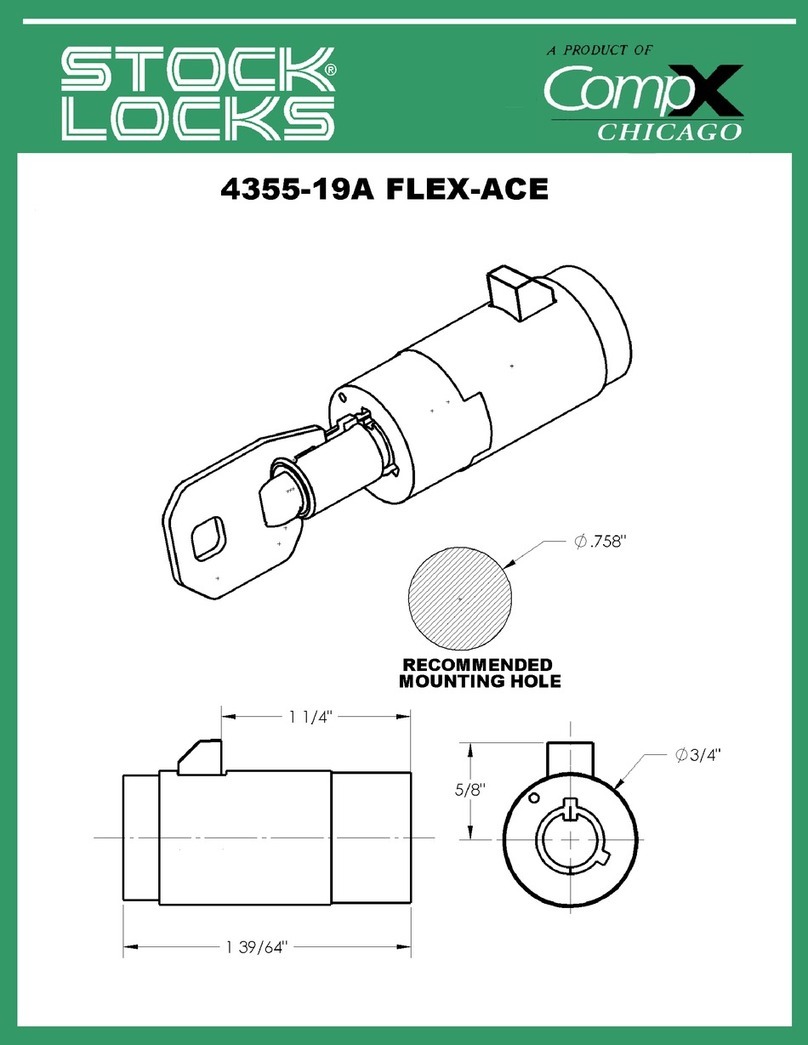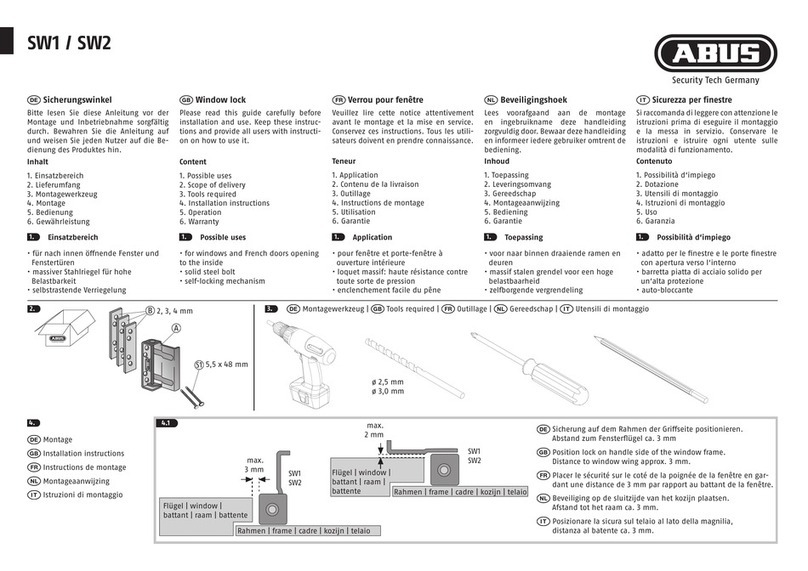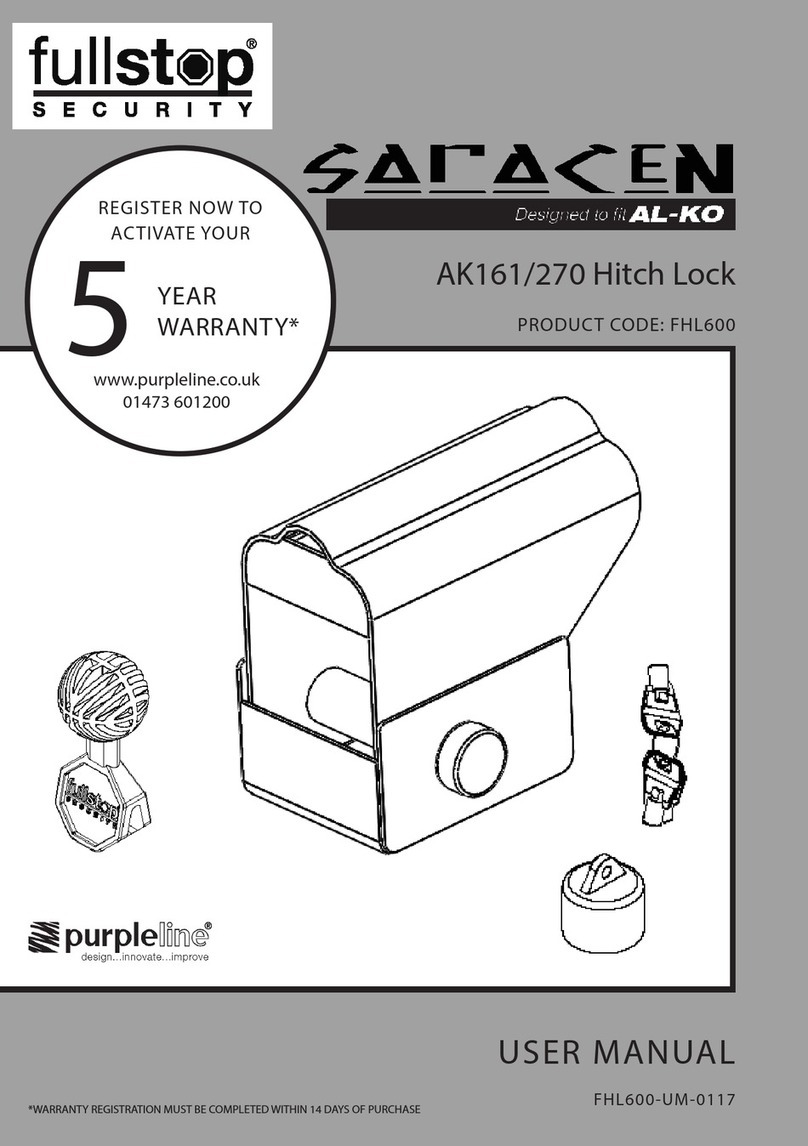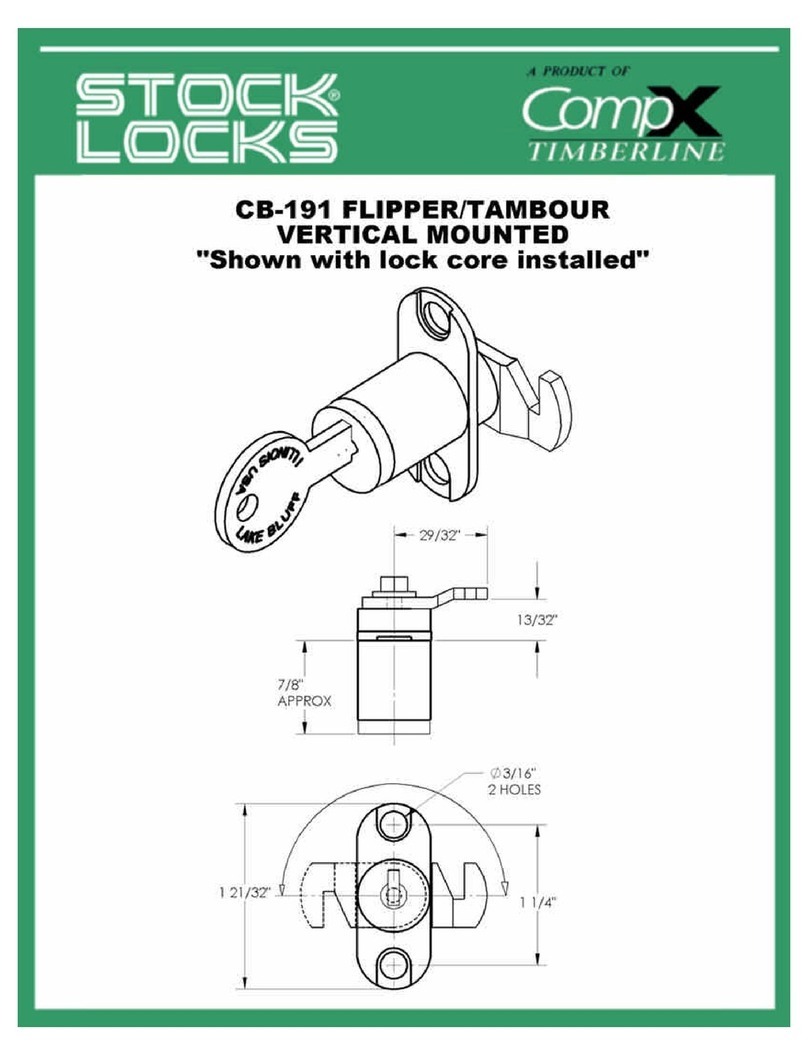INSYS TwinLock B670 CashProtect DS User manual

Manual
TwinLock B670 CashProtect DS
TwinLock C690 CashProtect DS

TwinLock B670/C690 CashProtect DS Imprint
Manual V.1.01B 2
Imprint
Copyright © Oktober 2021 INSYS MICROELECTRONICS GmbH
The contents of this manual are copyrighted. They may be used within the context
of operating the system. Any further usage is prohibited without a written permission
of the manufacturer. We appreciate comments and suggestions. All rights on this
documentation and the devices are with INSYS MICROELECTRONICS GmbH
Regensburg.
This handbook contains a description as concise as possible. The compilation of the
text has been made with the utmost care. Despite all efforts, there may be deviations
to the actual functions. No guarantee can therefore be given for the accuracy of the
contents. We can neither assume legal responsibility nor any liability for incorrect
information and their consequences. We appreciate suggestions and comments.
The design of cards may deviate from the sample cards illustrated. The same applies
to the illustrations of the graphical user interface of software programs.
Trademarks
The use of a trademark not shown below is not an indication that it is freely available
for use.
Windows® is a registered trademark of Microsoft Corporation.
INSYS locks® is a registered trademark of INSYS MICROELECTRONICS GmbH.
Publisher
INSYS MICROELECTRONICS GmbH
Hermann-Köhl-Str. 22
93049 Regensburg, Germany
Internet: http://www.insys-locks.com
Technical change without notice, omissions and errors excluded.
Please note:
Read thoroughly before use.
Keep for future reference.
Your opinion is important to us. Please rate us.
EN: https://www.insys-locks.com/en/customer-satisfaction/

TwinLock B670/C690 CashProtect DS Accreditations
Manual V.1.01B 3
Accreditations
EN 1300 / VdS 2396
M114307 High Security Lock Class EN B / 2 (TwinLock B)
M114308 High Security Lock Class EN C / 3 (TwinLock C)
G114106 TwinXT Closure monitoring –Class C
G114107 TwinAlarm Closure monitoring –Class C
G106016 Blocking Device - Class C
G105133 Ancillary Control Equipment (ACE) - Class C
G108061 Hold-Up Detector –Class C
G108062 Hold-Up Detector –Class C
EN 1300 (A2P certificate by CNPP, France)
2943.71-2 High Security Lock TwinLock B class 2 / B

TwinLock B670/C690 CashProtect DS Table of Contents
Manual V.1.01B 4
Table of Contents
1General Information on This Manual ...................................................... 7
1.1 Content and Usage ............................................................................. 7
1.2 General Qualification for Operating the System ................................. 7
1.3 Text Marks and Formatting ................................................................ 8
1.3.1 Safety Warnings..................................................................................... 8
1.3.2 Icons and their Meaning......................................................................... 9
1.3.3 Operating Instructions.......................................................................... 10
2Safety ................................................................................................... 11
2.1 Intended Use .................................................................................... 11
2.2 Danger Due to Electrical Energy....................................................... 11
2.3 Responsibility of the Operating Company ........................................ 11
2.4 Personnel Requirements................................................................... 12
2.4.1 Qualifications ....................................................................................... 12
2.4.2 Definition of ‘Skilled Electrician’........................................................... 12
2.5 Protection of the Environment.......................................................... 12
3System Description .............................................................................. 13
3.1 TwinLock B670/C690 CashProtect DS ............................................. 13
3.2 TwinLock B670 CashProtect DS....................................................... 13
3.3 TwinLock C690 CashProtect DS....................................................... 13
3.3.1 System Diagrams ................................................................................. 14
3.3.2 Operating Unit QPad ............................................................................ 17
3.3.3 Lock INSYS Lock 700........................................................................... 17
3.3.4 Bus Distributor TwinConnect / TwinConnect small .............................. 18
3.3.5 Blocking Device TwinXT / TwinXT small............................................... 18
3.3.6 ACE TwinAlarm.................................................................................... 18
3.3.7 Network Extension Unit TwinIP / TwinIP small..................................... 19
3.3.8 RFID cards / Tags / Bracelets................................................................ 19
3.3.9 Survey: Codes in the System................................................................ 20
3.4 Overview of the Functions................................................................ 21
3.4.1 Standard Functions .............................................................................. 21
3.4.2 Further Functions (Setting via software)............................................... 23
3.4.3 Optional Functions ............................................................................... 25
4Operation.............................................................................................. 28
4.1 Operating Unit QPad......................................................................... 28
4.2 Hotkeys............................................................................................. 29
4.3 Configuration via CashProtectPro (optional)..................................... 29
4.4 Operation with OTC Flexible............................................................. 30
4.4.1 Conditions for OTC Flexible.................................................................. 30
4.4.2 OTC Flexible - Personal PIN.................................................................. 30
4.4.3 QR Codes (with locksAppCIT only)....................................................... 30
4.5 The System Status and Mode........................................................... 31
4.5.1 The System Status ............................................................................... 31
4.5.2 Mode / CIT Function............................................................................. 31
4.5.3 Pairing.................................................................................................. 32
4.5.4 Code Distribution ................................................................................. 32
4.6 User- / Personnel Numbers............................................................... 33

TwinLock B670/C690 CashProtect DS Table of Contents
Manual V.1.01B 5
4.6.1 Entering User- / Personnel Number...................................................... 33
4.7 User Groups...................................................................................... 34
4.7.1 Operation with “User Groups” Selected............................................... 34
4.7.2 Selecting the Master / CIT master ........................................................ 35
4.8 User Authorisation............................................................................ 35
4.8.1 Fields and Boxes of the User Matrix..................................................... 36
4.8.2 Authorisations Ex Works via CashProtectPro ....................................... 37
4.8.3 Authorisation of Manager / Master / User / etc..................................... 38
4.9 Menu Structure of Operating Unit.................................................... 39
4.10 PIN Codes......................................................................................... 40
4.10.1 Types and Numbers of PIN Codes in Every Lock.................................. 40
4.10.2 Entering PIN Code................................................................................ 41
4.10.3 Entering PIN Code with Menu Keys ..................................................... 41
4.10.4 Entering PIN Code with Numeric Keys ................................................. 41
4.11 RFID Cards........................................................................................ 42
4.11.1 Reading an RFID Card at the Reader .................................................... 42
4.12 Opening and Closing ........................................................................ 43
4.12.1 Opening a Lock with PIN Code ............................................................ 43
4.12.2 Opening a Lock with a RFID Card ........................................................ 44
4.12.3 Triggering Silent Alarm When Opening a Lock .................................... 45
4.12.4 Opening a Lock with Dual Code ........................................................... 46
4.12.5 Opening a Lock with Timed Unlocking Delay....................................... 46
4.12.6 Opening with Unlocking Delay and Release Time ................................ 47
4.12.7 Opening Locks with Parallel Code........................................................ 47
4.12.8 Opening with OTC Flexible................................................................... 48
4.12.9 Disarming a Burglar Alarm System (BAS)............................................. 48
4.12.10 Closing a Lock...................................................................................... 49
4.12.11 Closing a Lock with Code Input............................................................ 49
4.12.12 Closing a Lock Automatically with the Door Switch............................. 50
4.12.13 Automatic locking DS .......................................................................... 50
4.12.14 Arming a Burglar Alarm System (BAS) ................................................. 51
4.13 Hidden Menu, Status, Network ........................................................ 52
4.13.1 Displaying the Hidden Menu................................................................ 52
4.13.2 Showing Status / Info about Components............................................ 52
4.13.3 Connecting the Lock with the Network................................................ 53
4.14 Settings: Manager ............................................................................ 54
4.14.1 Changing the System Manager Code................................................... 54
4.14.2 Registering Master Code...................................................................... 55
4.14.3 Deregistering Master Code................................................................... 56
4.14.4 Displaying Master Code ....................................................................... 56
4.14.5 Setting the Date and the Time of Day .................................................. 57
4.14.6 Dual Code ............................................................................................ 57
4.14.7 Parallel Code ........................................................................................ 58
4.14.8 Forced Sequence ................................................................................. 58
4.14.9 Time delay............................................................................................ 58
4.14.10 Time locked / Week Programs.............................................................. 58
4.14.11 Alarm Devices: XT Extension / TwinAlarm ........................................... 59
4.14.12 Setting Up “Pairing”............................................................................. 60
4.14.13 Setting Up “Code Distribution” ............................................................ 61
4.14.14 Single Access (Flexible OTC, Test Function)......................................... 62
4.14.15 System ID A/B...................................................................................... 63
4.14.16 Defining the Mode / CIT Function (B Version only)............................... 64

TwinLock B670/C690 CashProtect DS Table of Contents
Manual V.1.01B 6
4.14.17 Resetting the Counter at the Lock (B Version only) .............................. 64
4.14.18 Selecting User Groups.......................................................................... 65
4.15 Settings: Master ............................................................................... 66
4.15.1 Changing the Master Code................................................................... 66
4.15.2 Registering PIN Code for Users............................................................ 67
4.15.3 Registering CIT Master Code................................................................ 68
4.15.4 Deregistering PIN Code for Users......................................................... 69
4.15.5 Displaying User PIN Codes................................................................... 70
4.15.6 Registering Code Cards (RFID Cards) ................................................... 71
4.15.7 Deregistering User Code Cards ............................................................ 72
4.15.8 Displaying User Code Cards ................................................................. 73
4.16 Settings: Employees ......................................................................... 74
4.16.1 Changing User PIN Code...................................................................... 74
4.17 Service .............................................................................................. 75
4.17.1 Reset: Loading the Factory Settings of the Terminal ............................ 75
4.17.2 Reset: Delete Lock User Codes ............................................................ 77
4.17.3 Motor Step ........................................................................................... 78
4.17.4 Registering a New Lock ....................................................................... 79
4.17.5 Locking the System despite Defect Bolt Work Contact........................ 80
4.17.6 Licensing.............................................................................................. 81
4.17.7 Performing a Restart ............................................................................ 81
4.18 Import / Export.................................................................................. 82
4.18.1 Importing Configuration and Language................................................ 82
4.18.2 Messages During Configuration Import ............................................... 83
4.18.3 Exporting and Printing configuration and Protocol............................... 84
4.18.4 Selecting a Language ........................................................................... 85
5Maintenance, Repair and Cleaning....................................................... 86
6Trouble Shooting.................................................................................. 87
6.1 Supplying Power in Case of Power Breakdown ............................... 87
6.2 Error Messages................................................................................. 87
7Support................................................................................................. 93
8Disposal................................................................................................ 94
9Glossary................................................................................................ 95
10 Appendix ............................................................................................ 102
10.1 Table of Figures .............................................................................. 102
10.2 Notes .............................................................................................. 103

TwinLock B670/C690 CashProtect DS General Information on This Manual
Manual V.1.01B 7
1General Information on This Manual
1.1 Content and Usage
This manual contains information on operation, configuration and maintenance of
the electronic high-security lock system TwinLock B670/C690 CashProtect DS.
There is a separate manual for other versions of system TwinLock CashProtect.
The manual describes the procedures of the systems approved to comply with VdS-
class 2 and 3 standards and also informs about the system settings. VdS
Schadenverhütung GmbH, which among things evaluates security products, is a
company of the German Insurance Association.
For menu navigation see „Menu Structure of Operating Unit“on page 39, for
permissions see „Authorisation of Manager / Master / User / etc.“on page 38.
For information on assembly and installation, see the Assembly Instructions, a
separate document.
See the quick reference guide for instructions on opening and closing procedures.
All these documents enable you to handle the system efficiently and safely. They are
part of the system. The documents relevant for the specific tasks have to be stored
near the system. They have to be made available for technicians / maintenance
engineers / personnel.
Every person responsible for running a system in a commercial environment has to
take care that the local regulations concerning health and safety at work and the
regulations concerning the protection of the environment are observed as well as
the general rules concerning safety.
1.2 General Qualification for Operating the System
This manual is intended to be read by qualified and trained specialists mainly.
Persons configuring and administrating system TwinLock CashProtect have to be
capable of reading and understanding the manual in order to become acquainted
with all procedures necessary to set, administrate and operate the system. They
should be able to instruct users, help them and generally ensure safe and secure
operation of the system.

TwinLock B670/C690 CashProtect DS General Information on This Manual
Manual V.1.01B 8
1.3 Text Marks and Formatting
1.3.1 Safety Warnings
Danger
Imminent mortal danger / Danger of severe injuries / health
hazard.
Consequences which might arise from not being aware of
the danger.
Instructions on how to avoid the danger or remove its cause.
Warning
Possibility of mortal danger / Danger of severe injuries /
health hazard.
Consequences which might arise from not being aware of
the danger.
Instructions on how to avoid the danger or remove its cause.
Caution
Danger of getting injured.
Consequences which might arise from not being aware of
the danger.
Instructions on how to avoid the danger or remove its cause.
Caution
Danger of property damage.
Consequences which might arise from not being aware of
the danger.
Instructions on how to avoid the danger or remove its cause.
Note
No warning but additional information.
Background information / hints.

TwinLock B670/C690 CashProtect DS General Information on This Manual
Manual V.1.01B 9
1.3.2 Icons and their Meaning
Use the operating unit. After some seconds without user input,
the operating unit switches to idle mode.
Tools are required.
PIN code for users is required.
Master code, PIN code for the master of the lock is required
PIN code for the system manager code (manager code of lock).
The optional RFID card is required.
The optional system ID A or B.
Icons for unprotected / protected premises in illustrations.

TwinLock B670/C690 CashProtect DS General Information on This Manual
Manual V.1.01B 10
1.3.3 Operating Instructions
Unmarked text following a headline of a paragraph with operating instructions
contains information, which may be worth considering before performing the
operating procedures described. Such text does not contain safety instructions.
Take Text beginning with ‘Take’ contains information on tools or other
things you should use in order to be able to perform the
operating procedure successfully.
Also take note of the icons (see above).
Settings Text beginning with ‘Settings’ contains preconditions necessary
for a successful performance of the operating procedure.
1. Text, which looks like this, asks you to perform a task. The text may contain
names of Keyboard keys and Display Text of the display of the
operating unit.
Text formatted like this contains mostly information on changes, which have
been caused because you have performed a step of an operating instruction.
Text formatted like this closing a paragraph with operating instructions indicates that
you have carried out the operating procedure successfully and achieved the
objective.

TwinLock B670/C690 CashProtect DS Safety
Manual V.1.01B 11
2Safety
This chapter provides a survey of aspects, which have to be noted in order to protect
people and to guarantee a safe and trouble-free operation of the system. See further
task specific safety warnings in the following chapters in front of the descriptions of
the operational steps for which these warnings have to be observed.
2.1 Intended Use
Warning
Danger of locking persons in.
Mortal danger due to possible lack of air / food.
Before closing a lock, make sure that nobody is inside the
container / room you are about to lock.
Use the high-security electronic lock system for opening and closing safes /
containers for valuables and for the administration of the opening and closing
procedures only.
2.2 Danger Due to Electrical Energy
Jobs which require the removal of the housing of units of the system, like described
in the Assembly Instructions, may be performed by skilled electricians only
(definition see p. 12), which have been trained and entitled to perform these jobs by
INSYS MICROELECTRONICS or approved partner companies.
Caution
Danger of short circuit of electric components.
Danger of damage to the system.
Follow the instructions on cleaning the system.
Perform jobs on hardware components like described in the
Assembly Instructions. Unauthorised retrofitting and
modifications are forbidden.
2.3 Responsibility of the Operating Company
In case the high security lock system is used in a business environment, the
operating company has to take care to follow the legal requirements concerning
occupational health and safety.
In addition to the safety warnings of this manual, also the laws and regulations
concerning safety, the prevention of accidents and the protection of the environment
have to be observed that apply in the region where the system is operated.

TwinLock B670/C690 CashProtect DS Safety
Manual V.1.01B 12
2.4 Personnel Requirements
2.4.1 Qualifications
The various tasks described in this manual demand different kinds of qualification of
the persons that are to perform these tasks.
Warning
Danger due to insufficient skill / training of persons
assembling the system.
Persons not qualified sufficiently may not be able to assess the
risks arising from handling elements under voltage.
Have no other people but trained electricians perform jobs,
which require the removal of the housing or the insulation of
units of the system.
Make sure all other people are kept off the work area while such
jobs are being carried out.
Skilled electricians only, which have been instructed about the system by INSYS
MICROELECTRONICS or a partner company and have been authorised by one of
these companies, may perform jobs, which require the removal of the housing of
units of the system or the modification of the hardware configuration.
2.4.2 Definition of ‘Skilled Electrician’
Skilled electricians can perform jobs on electric systems. They are able to be aware
of possible dangers autonomously and they can avoid them due to professional
training, knowledge and experience and due to knowledge of the applicable
standards and rules.
They have been trained especially for the working environment in which they operate
and they know the relevant standards and rules.
2.5 Protection of the Environment
The operating company has to see to it that all legally relevant aspects concerning
environmental protection, which are valid at the place where the system is operated,
are followed throughout the life cycle of the product.
Also see section “Disposal“on page 94.

TwinLock B670/C690 CashProtect DS System Description
Manual V.1.01B 13
3System Description
3.1 TwinLock B670/C690 CashProtect DS
The general product name is TwinLock B670/C690 CashProtect DS, versions 1.1 and
2.1. With TwinLock C690 CashProtect DS, there also is version 3.2.
TwinLock CashProtect is the product range.
Letter B, C or letter D stands for the VdS class (B=2, C=3, D=4).
The first number „6“ indicates the type of lock.
B670 indicates systems with locks of VdS class 2 with extension unit TwinXT (small)
with network extension unit TwinIP (small) and, optionally, extension package
“RFID” and the optional usage of single-use code (OTC=one time code).
C690 indicates systems with locks of VdS class 3 with extension unit TwinXT (small)
and TwinIP (small), without the usage of OTC, and, optionally, with extension
package “RFID” with option box RFID.
The last letters of the name, DS, stand for "distributed systems" (distributed systems
with network).. In case they are added, the last numbers, [X.X] indicate the number
of locks in the system and the number of extension units TwinXT(small). These
numbers may be omitted.
As an option, extension package “TwinAlarm” with ancillary control element (ACE)
TwinAlarm may replace blocking device TwinXT and connect the system to a burglar
alarm system.
TwinLock B670/C690 CashProtect DS are modular electronic high security lock
systems with the security-relevant components fully redundant.
They are electronic high security lock systems with up to 100 users stored directly
at the lock. These users can form one group or be divided into two groups for two
clients (financial institute and cash services CIT, for example). The users can
authenticate themselves by entering PIN code and entering OTC (single-use code).
With TwinLock B670 CashProtect DS, TwinAlarm and RFID are optional. Persons
can open with flexible single-use codes. As these persons do not have to be
registered at the lock, the total number of users increases.
Every system contains an operating unit, at least one lock INSYS Lock and a field
bus distributor TwinConnect (small), which connects the components. All systems
come with an instruction manual set.
3.2 TwinLock B670 CashProtect DS
With the VdS class 2 lock TwinLock B670 CashProtect DS, flexible one-time codes
can also be used. Users who use flexible one-time codes can do so without logging
in to the unit beforehand, which increases the maximum number of operators. Users
can authenticate themselves by PIN code or, if necessary, by cards (with RFID,
personal PIN) and one-time code.
3.3 TwinLock C690 CashProtect DS
With the VdS class 3 lock TwinLock C690 CashProtect DS, no one-time codes can
be used. All users are registered directly at the lock. Users can authenticate
themselves by PIN code.

TwinLock B670/C690 CashProtect DS System Description
Manual V.1.01B 14
3.3.1 System Diagrams
TwinIP, the network extension unit for TwinLock B670 / C690 CashProtect DS, is
illustrated in the following figures. It is located inside the protected premises and
connects the system to the network.
Fig. 1: System architecture of system 1.1
1) Two optional switches for bolt mechanism and release switch
Base System 1.1 consists of an operating unit, with option box RFID, as it may be,
with a power adapter outside the protected premises, one INSYS Lock, one bus
distributor TwinConnect, one blocking unit TwinXT and unit TwinIP inside the
protected premises. TwinIP, TwinConnect und TwinXT can come as variant „small“.
As an option, there is ancillary control TwinAlarm for a burglar alarm system (BAS).
TwinAlarm is a hold-up detector. The BAS is not part of the extension package.
Extension package “RFID” with the option box RFID next to the operating unit is
optional, too.

TwinLock B670/C690 CashProtect DS System Description
Manual V.1.01B 15
Fig. 2: System architecture of system 2.1
1) Two optional switches for both bolt mechanism and release switch
The system 2.1 features two locks inside the protected premises. All other
components are the same as those of system 1.1.

TwinLock B670/C690 CashProtect DS System Description
Manual V.1.01B 16
Fig. 3: System architecture of a system with TwinAlarm (example)
1) Burglar Alarm System (BAS) with input (Alarm contact, State contact, Arming)
from ACE unit TwinAlarm and output (BAS-Ready, Disarm-Block,
Acknowledgement, Release –No release, Power supply) to unit TwinAlarm
2) Optional bolt mechanism switch and switch for time program suspension

TwinLock B670/C690 CashProtect DS System Description
Manual V.1.01B 17
3.3.2 Operating Unit QPad
Fig. 4: Operating unit QPad
With operating unit QPad, set and operate the system. For systems TwinLock
B/C6X0 CashProtect there is the version with membrane keypad.
Configuration via USB available. For a description of the control elements see the
beginning of chapter 4, „Operation“ starting on page 28.
A socket for connecting the cable for emergency supply, is situated at the bottom of
the operating unit. The option box RFID is available.
Fig. 5: Operating unit with option box RFID
3.3.3 Lock INSYS Lock 700
Fig. 6: INSYS Lock 700
With lock INSYS Lock 700, you can lock and unlock the safe / container for valuables.
The lock is located inside the protected premises. You can connect up to 2 locks /
with C690 up to 3 locks to one system.

TwinLock B670/C690 CashProtect DS System Description
Manual V.1.01B 18
3.3.4 Bus Distributor TwinConnect / TwinConnect small
Fig. 7: Bus distributor TwinConnect / TwinConnect small
Via a redundant bus system, the bus distributor TwinConnect (small) connects the
system components with each other. The bus distributor is located inside the
protected premises.
3.3.5 Blocking Device TwinXT / TwinXT small
Fig. 8: Blocking device TwinXT / TwinXT small
Blocking device TwinXT (small) inside the protected premises of the system is
available as an extension unit. With TwinXT (small), you can add in- and output
contacts to the system. With these contacts, up to 2 locks can be blocked / released
and they can be equipped with bolt mechanism contacts. Additionally, TwinXT
provides a status- and an alarm contact for silent alarm.
3.3.6 ACE TwinAlarm
Fig. 9: Ancillary control equipment (ACE) TwinAlarm
Optional ACE TwinAlarm inside the safe / container for valuables connects the
system with an optional burglar alarm system (BAS). It functions as distributor for
the BAS (bolt-, door- and other contacts as well as resistance monitor). The
electronic keys and the input signals of the BAS are evaluated inside TwinAlarm.

TwinLock B670/C690 CashProtect DS System Description
Manual V.1.01B 19
3.3.7 Network Extension Unit TwinIP / TwinIP small
Fig. 10: Network extension unit TwinIP / TwinIP small
With optional network extension unit TwinIP (small), you can connect lock systems
via network and protocol TCP/IP.
3.3.8 RFID cards / Tags / Bracelets
Fig. 11: Design example RFID card, tag and RFID bracelet
Optional accessory. RFID cards are mobile media for code transfer of the users of a
system with option box RFID. As an alternative, code can also be entered manually.
In order to empower users to open locks with cards, the system manager has to
authorise them via user matrix and the ‘lock master’has to register the cards at the
lock.

TwinLock B670/C690 CashProtect DS System Description
Manual V.1.01B 20
3.3.9 Survey: Codes in the System
Fig. 12: Survey: codes in a sample system with TwinAlarm
1) Lock 1: mnemonic codes:
1 system manager code (manager code of lock 1)
1 master code
99 PIN codes for users
2) Lock 2: mnemonic codes:
1 master code
99 PIN codes for users
3) TwinAlarm: physical codes:
1 master code
PIN-Codes for users
Additionally, there may be flexible OTC (single-use codes).
Caution
With TwinAlarm: If PIN codes for users are registered at
lock 1 before TwinAlarm is installed and activated, the PIN
codes will not be saved in TwinAlarm.
These users cannot arm and disarm the burglar alarm system
with these PIN codes.
Make sure TwinAlarm is installed and activated before you register
PIN codes for users at lock 1.
This manual suits for next models
1
Table of contents
Other INSYS Lock manuals
